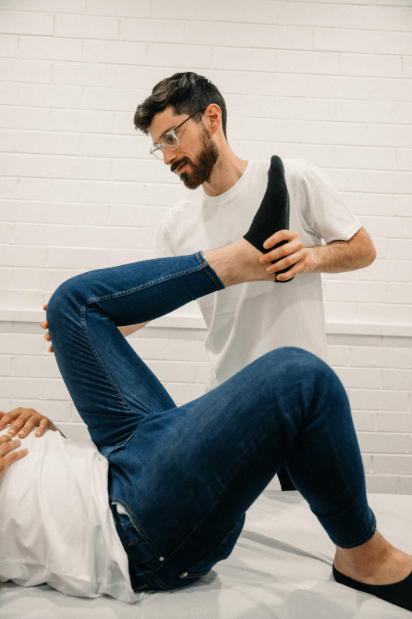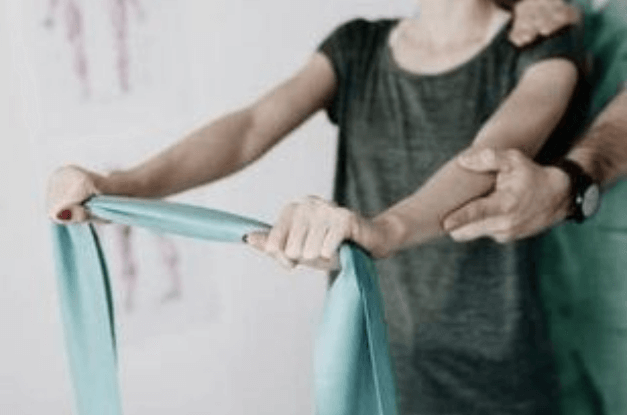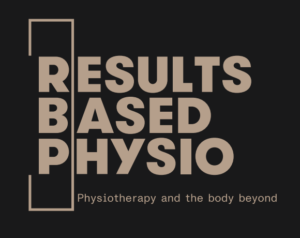Whilst manual therapy is a crucial part of injury treatment and recovery, for you to achieve the best results this therapy should be combined with other rehabilitative methods. Many of the techniques used by modern physiotherapists assist rehabilitation by accelerating the body’s natural healing processes, this process can be further supported by adhering to rehab programs. Physiotherapists can suggest a range of methods such as stretches, strength and mobility exercises to be completed at home or at the gym. The use of these techniques depend on the physio’s assessment of your injury type, location, and pain levels.
At Results Based Physio, every client receives a specific, personalised care plan after their initial treatment which outlines exercises and recommendations tailored to their injury/ies, individual needs and lifestyle.
STRETCHING
When muscles are tight, due to injury, overuse, postural issues etc., muscle fibres are shortened and therefore the range of motion (flexibility) of a joint is decreased. Stretching the muscle manually increases the length of the target muscle fibres, reducing tension and increasing mobility. While some improvement in muscle tension may be apparent immediately after stretching, the best results come from sustained dedication to a stretching plan as outlined by your practitioner. The duration and frequency of this stretching plan will be tailored to address your personal problems and goals. Tolerance to any pain elicited by stretches increases with more repetition, meaning the more you stretch, the easier it gets.

Stretching can also aid rehabilitation from injury or surgery and shorten recovery time. One study examined the effects of regular stretching on athletes with hamstring sprains, one group of these athletes performed knee extension stretches (lengthening hamstring muscles) daily, while the other did not have a stretching program. Ultimately, the athletes who stretched returned to their full range of motion faster and were back to their normal athletic performance faster than non-stretching athletes. Stretching can also aid the successful formation and orientation of collagen fibres in damaged tissue which is essential to tissue repair.

Additionally, adherence to stretching routines can also be useful for pain management, such as with chronic neck or musculoskeletal pain.
Stretching is a common rehab tool for physios as it is an easy, client-friendly intervention that can usually be carried out at home and requires little to no equipment. Ideal stretch types, intensities and frequencies will vary depending on the client and their injury and will be advised by your practitioner.
STRENGTHENING EXERCISES
Resistance and strength based programs work by overloading the target muscle in order to build muscle tone and increase muscle power. This is usually done by gradually increasing the load/force exerted on the muscle. Depending on the type and intensity of the injury or pathology, strengthening exercises can incorporate equipment such as weights, resistance bands, gym machines or may only require the use of your own body weight.

These exercises can be used to rehabilitate weakened muscles following injury or surgery in order to prevent muscle atrophy, or to prevent injury of muscles altogether. This method may also be employed to maintain a balanced muscle composition by strengthening antagonistic muscles to those that are overworked. Balanced muscular tone can decrease chances for injury as well as improving posture. Strength training can also decrease pain in people with chronic musculoskeletal pain issues. Exercising target muscles promotes increased blood flow to the area so the muscle is delivered with restorative factors such as white blood cells and key nutrients. Therefore, exercise accelerates the body’s natural healing process and helps restore you to a pain-free, high-performing state faster.
A Study conducted on women with painful trapezius muscles involved specific strength training exercises targeting the trapezius and associated muscles such as shoulder abduction, upright and 1-arm rows using light weights. The study determined that this training decreased pain, while also increasing strength and mobility of the shoulder joint. Neck and shoulder pain is one of the most common pathologies presented to physios in recent times due to the growing percentage of the workforce bent over computers for hours at a time. Specific strengthening exercises such as these can be used as both preventative and reactive measures to relieve pain of sedentary workers and hence improve their quality of life.
So the moral of the story is; Do Your Rehab. Stretching and strengthening is an important part of the rehabilitation process and goes hand in hand with the manual therapy provided by practitioners.
REFERENCES:
Andersen, L.L., Andersen, C.H., Zebis,M.K., Nielsen, P.K., Søgaard, K., Sjøgaard, G.(2008). Effect of physical training on function of chronically painful muscles: a randomized controlled trial. Journal of Applied Physiology, 105(6), 1796-1801.
Malliaropoulos, N., Papalexandris, S., Papadala, A., Papacostas, E. (2004). The Role of Stretching in Rehabilitation of Hamstring Injuries: 80 Athletes Follow-Up. Medicine and Science in Sports and Exercise, 36(5), 756-759.
Nielsen, P.K., Andersen, L.L., Olsen, H.B., Rosendal, L., Sjøgaard, G. and Søgaard, K. (2010). Effect of physical training on pain sensitivity and trapezius muscle morphology. Muscle Nerve, 41, 836-844.
Page, P. (2012). Current concepts in muscle stretching for exercise and rehabilitation. International journal of sports physical therapy, 7(1), 109–119.
Ylinen J, Kautiainen H, Wirén K, Häkkinen A. (2004). Stretching exercises vs manual therapy in treatment of chronic neck pain: a randomized, controlled cross-over trial. Journal of Rehabilitation Medicine, 39(2),126-132.
Jack, K., McLean, S. M., Moffett, J. K., & Gardiner, E. (2010). Barriers to treatment adherence in physiotherapy outpatient clinics: a systematic review. Manual therapy, 15(3), 220–228. https://doi.org/10.1016/j.math.2009.12.004


